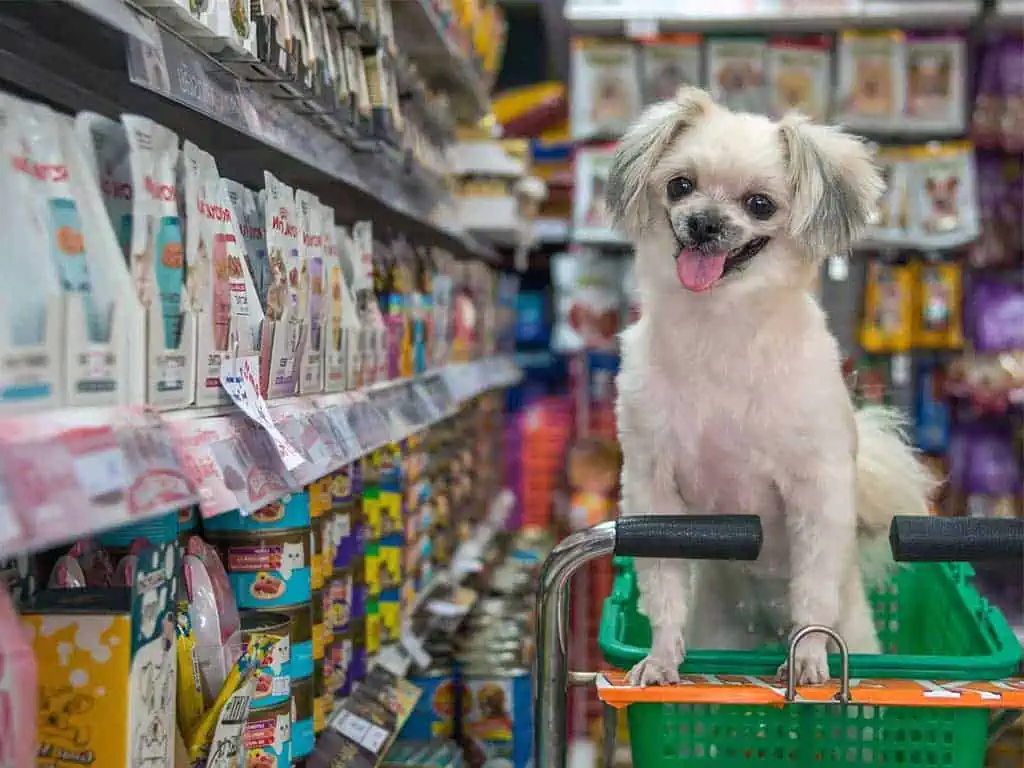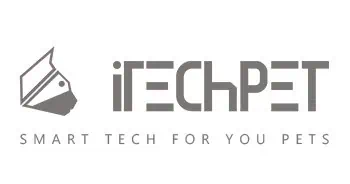
Introduction
Every grocery run feels more expensive than the last. According to the U.S. Department of Agriculture’s Food Price Outlook, overall grocery prices in the United States have increased by nearly 25% since 2020. Add the cost of pet food, treats, litter, and cleaning supplies — and the average pet-owning household easily spends hundreds more each month.
For pet parents, balancing human groceries with pet care essentials can be tricky. The good news is that there are smarter ways to shop, save, and plan ahead — without cutting quality or skipping your furry friend’s needs.
That’s where Amazon Fresh becomes a game-changer. It’s not just another grocery service — it’s a full ecosystem for budget-savvy pet owners who want fresh food, convenient delivery, and access to household staples in one place. Let’s explore seven proven, data-backed ways how to save money on groceries while keeping your pets happy and healthy.
Table of Contents
1. Plan Your Weekly Groceries — Including Pet Supplies
Impulse shopping is one of the biggest hidden budget killers. A 2024 Consumer Reports study found that up to 40% of grocery items bought each week are unplanned purchases — often snacks, extras, or duplicates. For pet owners, this can easily include random toys, extra treats, or backup bags of food “just in case.”
The best fix is a combined shopping plan — one list for both human and pet needs. Before adding anything to your Amazon Fresh cart, group items into categories like:
- Pantry and pet treats (e.g., peanut butter, oats, dry snacks)
- Produce and perishable pet ingredients (carrots, apples, pumpkin puree)
- Cleaning and odor-control supplies
- Storage, litter, and disposable products
Creating a single list helps you spot overlaps — like realizing your all-purpose vinegar cleaner also serves as a safe, pet-friendly deodorizer. Amazon Fresh’s built-in list tool even lets you track sale prices and compare between Fresh and Whole Foods options.
💡 Pro Tip: If you’re using a smart feeder like the PETLIBRO Automatic Feeder, align your grocery schedule with the feeder’s refill cycle. This ensures you restock efficiently without over-ordering food your pet might not finish.
2. Take Advantage of Amazon Fresh’s Subscription Savings
Amazon Fresh’s Subscribe & Save program is one of the easiest ways to lower recurring grocery costs. You can save 5%–15% by setting up automatic deliveries — not just for pasta and coffee, but for pet wipes, paper towels, and even litter refills.
When you subscribe to essentials, you lock in prices for months and avoid last-minute, high-priced purchases at local stores. For example, you can build a monthly box with:
- Pet-safe cleaning wipes and disinfectants
- Cat litter liners or biodegradable bags
- Dog treats and kibble
- Kitchen detergents and trash bags
These consistent savings add up fast — especially when paired with Amazon Fresh’s free-delivery thresholds. For busy households juggling work, pets, and family, automating core items saves both time and money.
(Consumer Reports notes that subscription models like this can save an average of $400–$600 annually for multi-person households.)
3. Buy in Bulk — But Only What You’ll Use
“Buying in bulk” doesn’t always mean filling your home with giant boxes. It means buying smart — choosing non-perishable, high-use products in larger quantities when discounts make sense.
Amazon Fresh makes this simple through its Bulk Size filter, which groups cost-effective packs together. For pet owners, bulk shopping often pays off for items like:
- Baking soda (a natural litter deodorizer)
- White vinegar (safe cleaner for pet stains)
- Reusable storage bags and bins for food
- Dry goods that both you and your pets can use, such as oats or peanut butter
A NielsenIQ report shows that bulk buyers spend roughly 12–18% less per unit than small-pack shoppers.
By combining these savings with proper storage — and using tools like the Furminator deShedding Tool to reduce mess and cleaning supply use — you’re effectively lowering both food and maintenance costs around your home.
4. Switch to Store Brands and Eco Lines
Private-label groceries are one of the biggest underused money-saving strategies. Amazon’s in-house lines — Amazon Fresh Brand and Whole Foods 365 — often deliver the same quality as major brands but at 10–20% lower prices.
This isn’t just about budget: many of these brands produce eco-friendly and pet-safe options that reduce your exposure to harsh chemicals. Examples include:
- Biodegradable cleaning sprays and paper towels
- Unscented detergents for sensitive pets
- Natural dish soaps and disinfectants
You can find these under Amazon Fresh’s “Eco-Friendly Home” section. Stack them with Fresh’s rotating digital coupons, which can save another 5–10% each week.
These alternatives are great for multi-pet households where strong chemical smells can irritate sensitive noses. They’re healthier for you, your pets, and your budget — all in one click.
5. Store Groceries and Pet Food Properly to Prevent Waste
The U.S. Department of Agriculture estimates that 30–40% of all food in the U.S. goes to waste, often because it’s stored incorrectly. That’s hundreds of dollars per family every year — gone.
Food waste isn’t limited to humans. Pet food spoils just as easily when left open or exposed to moisture. A 2023 Pet Food Industry study found that over 20% of pet owners discard unfinished dry food due to freshness issues.
Here’s how to prevent it:
- Store dry kibble in airtight containers, away from light.
- Freeze or refrigerate homemade pet meals in portioned containers.
- Label jars with purchase dates to track freshness.
- Rotate pantry items so older stock gets used first.
Amazon Fresh offers resealable silicone bags and vacuum-seal storage kits that extend shelf life. By keeping both groceries and pet food fresher longer, you’ll reduce waste and keep your spending under control.
6. Cook More — for You and Your Pet
Cooking at home is one of the simplest yet most powerful money-saving habits. According to the Bureau of Labor Statistics Consumer Expenditure Survey (2024), the average U.S. household can save $2,000 per year by eating home-prepared meals rather than dining out.
Pet owners can stretch that benefit even further by using grocery ingredients for dual-purpose cooking — safe for both human and pet snacks. Examples include:
- Frozen banana bites: blend bananas with plain yogurt, freeze, and share with your dog.
- Pumpkin oatmeal biscuits: mix oats, pumpkin puree, and egg, bake until firm.
- Baked salmon flakes: rich in Omega-3, ideal as cat toppers.
Always verify safety on the ASPCA Pet Nutrition Center before serving any human foods to pets.
These small DIY treats cost a fraction of prepackaged snacks — and help you use every bit of your grocery haul efficiently.
Plus, cooking together strengthens the human-pet bond. Preparing your meals at home also reduces packaging waste, reinforcing an eco-friendly lifestyle.
7. Use Amazon Fresh for Price Comparison and Time Savings
Between rising gas prices and packed schedules, frequent trips to multiple stores aren’t efficient anymore. Amazon Fresh allows you to compare prices instantly, read reviews, and get same-day delivery in many U.S. cities.
Pet parents benefit most from:
- Side-by-side comparisons of branded vs. private-label items.
- Personalized suggestions that highlight current deals on cleaning and pet-safe goods.
- First-order promotions, often $10–$20 off new Fresh users.
- Free delivery on qualifying orders with an Amazon Prime membership.
The convenience factor also translates to less impulse buying — you only purchase what you need. That’s a subtle but real way how to save money on groceries without sacrificing the quality of your food or your pets’ nutrition.
Sync your grocery list with Alexa or your Amazon app so you can say “Add paper towels” or “Add dog food” when supplies run low. These small automations prevent those last-minute, overpriced convenience-store runs.
If you’re often busy grooming your pets or cleaning, pairing Fresh with smart home tools like the Furbo Dog Camera 360° helps you monitor pets while deliveries arrive — saving time and reducing stress.
Real-World Savings Example
Let’s say an average pet owner spends $150 weekly on groceries and $40 on pet products at local stores. By shifting half those purchases to Amazon Fresh and applying just three of the strategies above — subscription savings, bulk buying, and store-brand switching — monthly savings can reach $60–$80, or nearly $1,000 per year.
That’s enough to cover vet visits, grooming tools like the Dog Hair Dryer Shernbao, or an upgraded automatic feeder.
Expert Insight and Data Sources
Industry data from Consumer Reports and the U.S. Department of Agriculture consistently show that price awareness, home cooking, and digital shopping tools are among the most effective ways to offset inflation. When you add pets to the equation, reducing waste and leveraging online options like Amazon Fresh becomes even more crucial.
Meanwhile, organizations like the ASPCA emphasize that mindful shopping also benefits your pets’ well-being. Choosing safe foods and eco-friendly products supports both their health and your household’s sustainability goals.
FAQ How to Save Money on Groceries
How can I save money on groceries without cutting back on my pet’s needs?
Focus on meal planning for both you and your pet. Buy shared ingredients such as oats, pumpkin, and carrots that can be used in human and pet recipes. Use Amazon Fresh for price comparison and to find bulk or subscription discounts. This keeps quality high while reducing waste.
Are Amazon Fresh prices cheaper than local grocery stores?
In many cases, yes. Amazon Fresh often matches or undercuts major U.S. grocery chains on staples like produce, canned goods, and pet food — especially when you use Subscribe & Save or limited-time coupons. The key advantage is consistency: you avoid impulse buys that drive up spending at physical stores.
What kind of groceries can I share safely with my dog or cat?
Many fresh items are pet-safe and affordable, including carrots, bananas, blueberries, pumpkin puree, and plain yogurt. Always verify foods using the ASPCA’s Pet Nutrition Center. Avoid onions, garlic, grapes, and chocolate — they’re toxic to pets.
Is it better to cook pet food at home or buy it ready-made?
Both options can be cost-effective. Cooking simple pet meals at home gives you control over ingredients and can save 20–30% monthly. However, ready-made food from Amazon Fresh or trusted brands works better for busy owners who need consistent nutrition and portion sizes.
How does buying in bulk actually save money for pet owners?
Bulk purchasing reduces cost per unit and ensures you always have essentials on hand. Items like paper towels, baking soda, and dry kibble can last months if stored correctly. According to NielsenIQ, bulk buyers save an average of 12–18% annually on household goods, including pet-related supplies.
What’s the best way to prevent food waste when living with pets?
Organize groceries and pet food by expiration date, use airtight containers, and freeze perishable items in small portions. The U.S. Department of Agriculture estimates that 30–40% of U.S. food waste can be prevented through better storage and meal planning — saving money and reducing spoilage.
Can Amazon Fresh help me manage both my grocery and pet shopping in one place?
Absolutely. Amazon Fresh lets you create combined shopping lists that include human and pet products. You can reorder quickly, compare prices, and get everything delivered together. For pet owners, this convenience translates into fewer trips, less impulse spending, and easier budgeting.
Call to Action
Inflation and pet care costs aren’t slowing down anytime soon — but that doesn’t mean your wallet has to suffer. With Amazon Fresh, you can combine your grocery and pet shopping into one efficient, budget-friendly experience.
Order smarter, waste less, and take advantage of exclusive first-order discounts to stretch your budget further.
👉 Shop Amazon Fresh today — and start your first grocery order to see real savings in your home and your pets’ routine.

